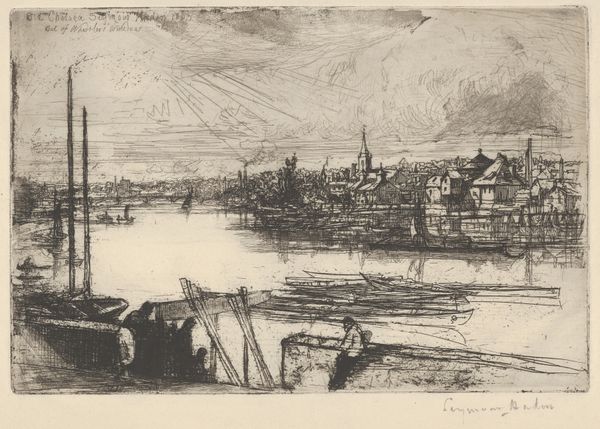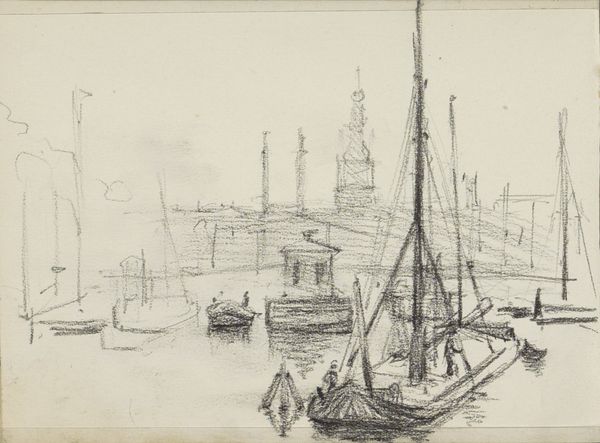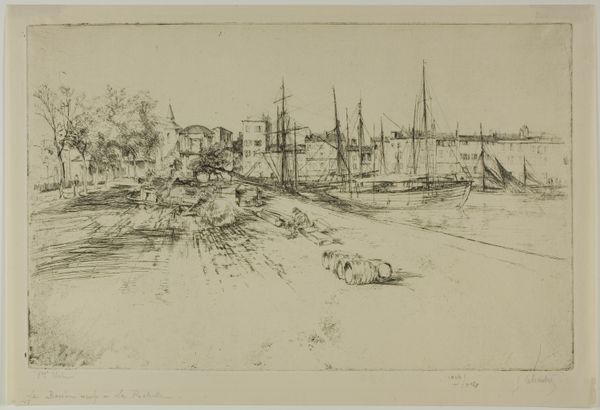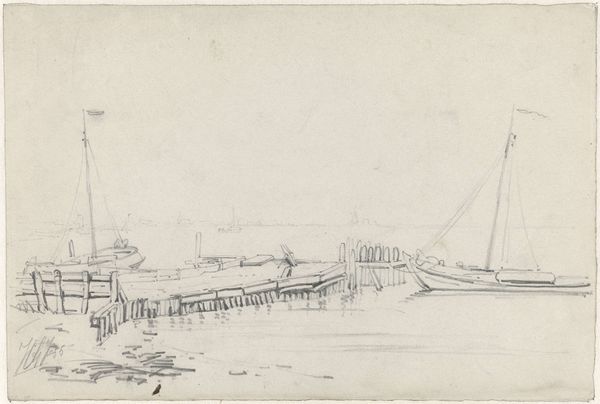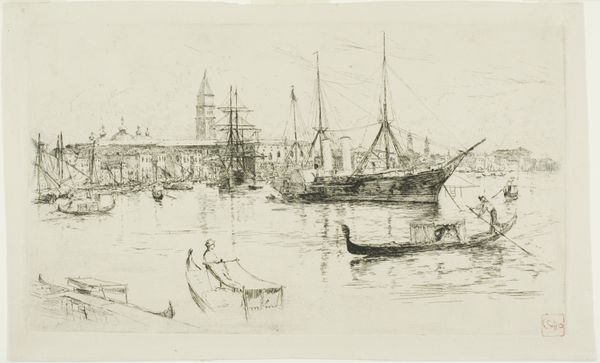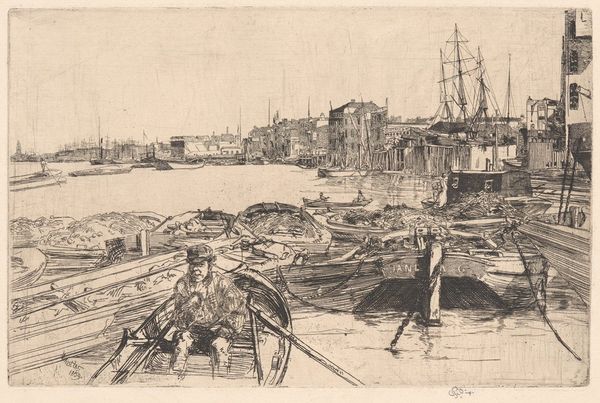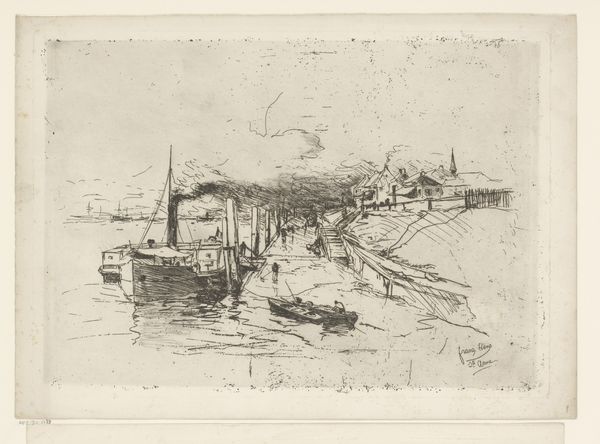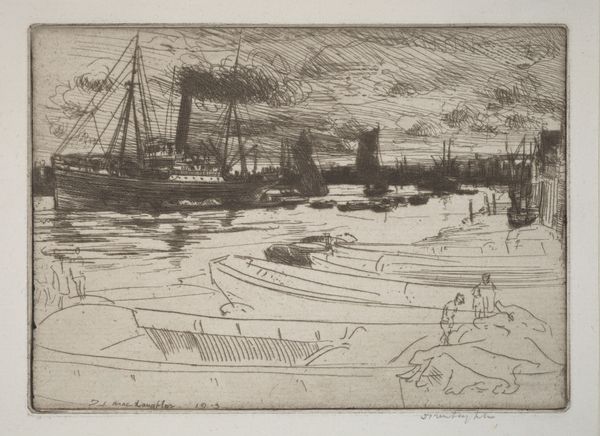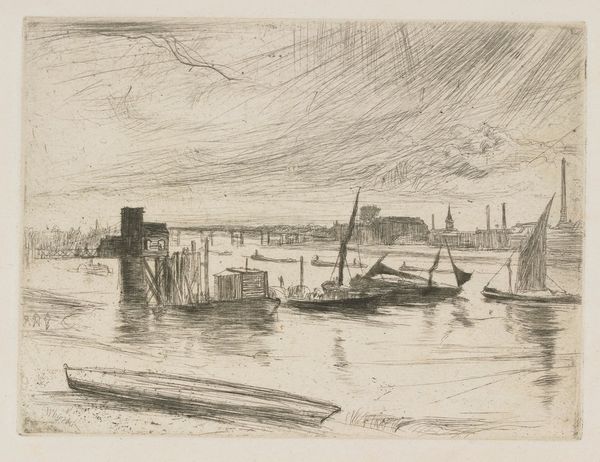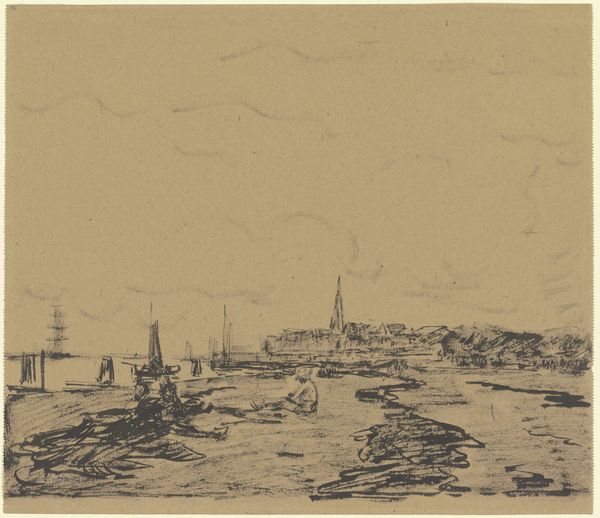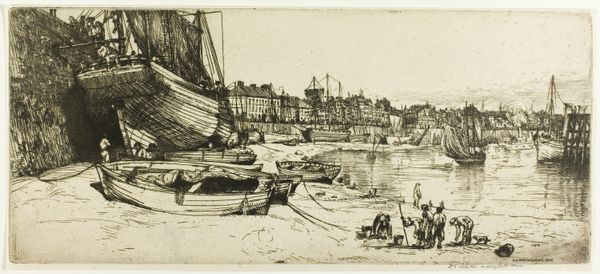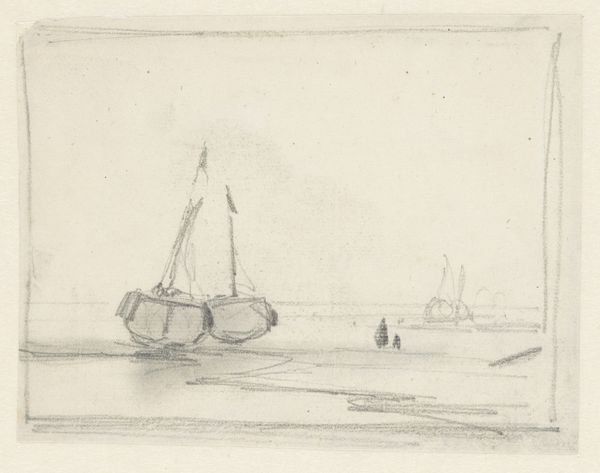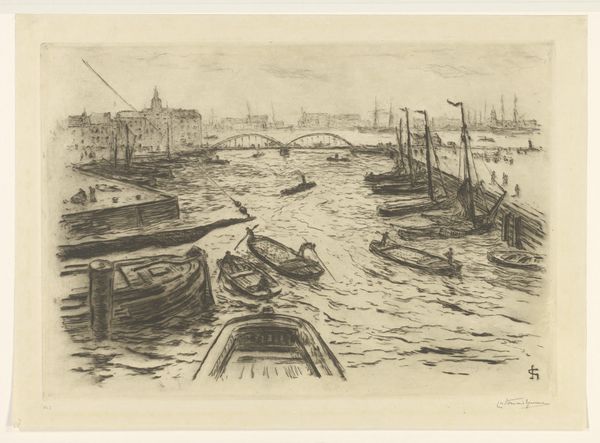
Dimensions: Image: 111 x 169 mm Sheet: 232 x 354 mm (left and right edges folded over)
Copyright: National Gallery of Art: CC0 1.0
Editor: This is John Henry Twachtman's "The Harbor, Bridgeport," an etching likely created sometime between 1885 and 1921. It’s very subtle, almost dreamlike. The scene is calm, but there is definitely a hint of industry in the background, in those buildings on the shoreline. What stands out to you about it? Curator: What I find compelling about Twachtman’s harbor scene is its interrogation of industrial development through a distinctly Impressionistic lens. The soft lines and muted tones seem to critique, perhaps even resist, the encroaching industrialization of American life at the time. Look at how the harbor is depicted, how these working boats and buildings intermingle with the waterways: does it strike you as harmonious, or perhaps more… conflicted? Editor: Conflicted, definitely. The boats seem grounded, almost trapped by the shallow water and the emerging skyline. But trapped in what way? Economically, geographically...? Curator: Precisely. The etching portrays not just a landscape, but the lived experiences of people navigating shifting economic landscapes. The composition invites us to consider the intersections of labor, urbanization, and environmental change during the late 19th and early 20th centuries. The everyday realities and industrial undercurrents also tell stories of exploitation. Who profits from that skyline? Who is out on the boats, navigating the waters of a transforming city? What class and labor hierarchies do you observe? Editor: I never would have considered exploitation just from glancing at what looks like a simple harbor image! Now it does make me wonder about those people. I now wonder if he also intended to document working conditions or some type of social inequality, especially because of those larger buildings looming over what seems like grounded boats. Curator: Indeed. By looking at the etching this way, we unveil the nuances that expose socioeconomic elements. Every etched line whispers narratives of those whose lives were intrinsically linked to the currents of that harbor. Editor: This reframes how I view this piece entirely. Now, I see a historical record speaking to present-day conditions. Curator: Exactly!
Comments
No comments
Be the first to comment and join the conversation on the ultimate creative platform.
